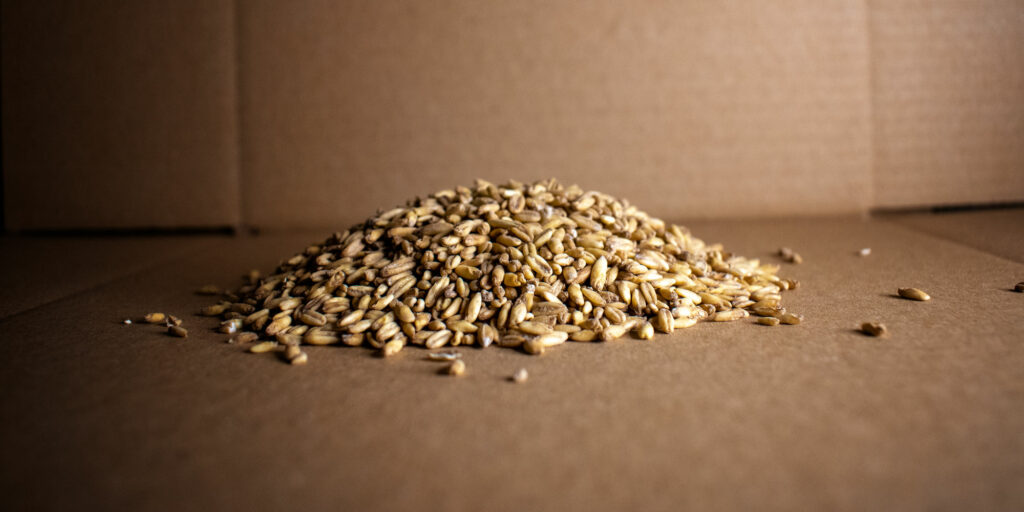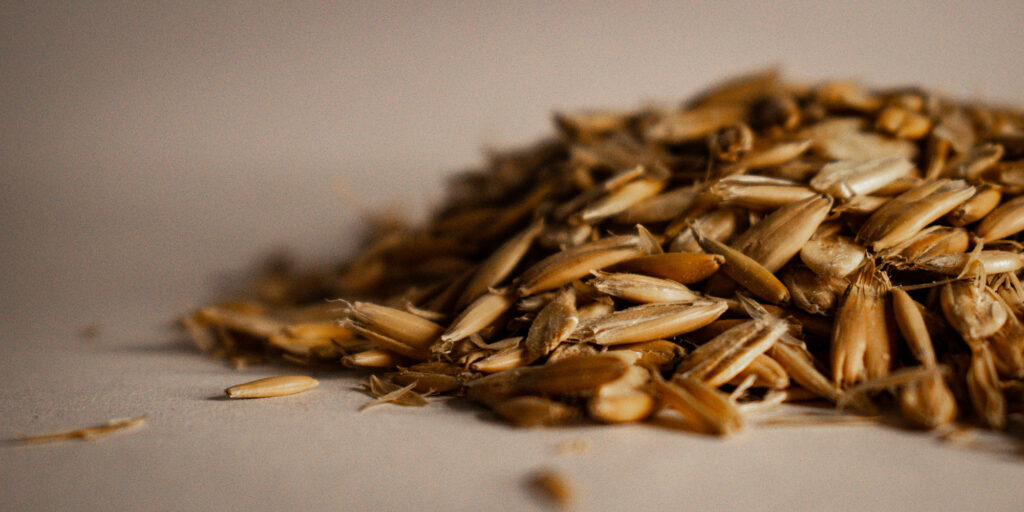
Geterbrewed has previously looked at brewing with adjuncts and flaked Torrefied products on the blog. In this post, we are trying to help the brewing community brew with Oats successfully. Oats can contribute a smooth & silky mouthfeel, including rich and enjoyable textures, such as creaminess. Oats play a pivotal role in creating a haze in beer, and using the correct oats will make the brew day flow better and create a better-finished product. We highly recommend GEB Torrefied Oats & Golden Naked Oats from Simpsons
Oats have a long tradition as a speciality ingredient in beer. With their unique qualities, oats have carved a niche in the craft brewing world. They have become a staple in many brewers’ grain bins, lending their distinct characteristics to Oatmeal Stouts, hazy IPAs, and NEIPAs. Their unparalleled popularity and versatility set oats apart from the more ‘traditional’ cereal brewing grains, such as wheat and barley.
Most oats used in brewing undergo some form of processing, whether they are malted or not. Unmalted oats are typically processed to remove their protective hull or husk layer, with flaked torrified oats being the one exception. This process transforms the cereal oat into an oat groat, called a ‘naked’ grain.
What differences are there in oats brewers should be taken into consideration when brewing with oats?
All the different oat types will give the brewer lots of protein to generate haze and a smooth mouthfeel.
Malted naked oats make it easier to get at the extract and goodness, meaning you can use less. However, they are huskless, and you can get run-off issues if you go too high.
Porridge oats are very high in beta-glucans, which can cause viscous worts and separation problems. Brewers should note unmalted oats must be mashed with base malts to extract sugar. The starch in unmalted oats will only be usable to yeast if enzymes can start breaking it down. Unmalted oats are going to be the most neutral flavour-wise. They are more known as a body-building component and a potential contributor to some hazy compounds for styles like witbiers and hazy IPAs.
Malted oats offer a lower beta-glucan level, and the husks help with wort separation, but the husk is a large proportion of the grain weight, and you are paying for an inert product. Torrefied oats offer great haze and mouthfeel with the husk at a great value.
Oats can add various flavours and body-building components to a beer. They are generally richer in beta-glucans, proteins, and fatty acids than barley. The beta-glucans, along with other elements, are known to help build body in beer, but when it comes to mashing, they can cause headaches in the form of slow run-off from the mash tun. There are several tricks to avoid this headache, but adding rice hulls to your mash is the easiest solution.
What are the benefits of using flaked torrefied oats vs jumbo porridge oats/ flaked oats in beer?
Flaked torrefied oats and porridge oats will give similar haze and flavour properties. Torrefied oats should offer lower beta-glucan levels and are a value product.

What exactly is the gelatinisation of the starchy endosperm?
When you bite into a grain of malted barley, the starch is solid and white. When starch gelatinises, it turns from a solid white to a clear liquid, which can be mixed into the wort. Once gelatinised alpha and beta-amylase are broken down, they can be used to make fermentable sugars.
Tips for successful use of flaked adjuncts in brewing beer?
Add flakes directly to the Mash Conversion Vessel and try to add them throughout mashing so they are evenly spread; there is no need to mill them. Rice and Maize are pre-gelatinised, so they are perfect for use at normal brewing temperatures. Use them to improve head retention and mouthfeel.
A popular technique is to toast oats, making them brown and smell like oatmeal cookies. These characteristics are excellent in beers like brown ales, winter warmers, and porters.
Wheat vs torrefied wheat?
Malted wheat and torrefied wheat have different flavours but contribute to the mouthfeel. Wheat is high in protein, and malted wheat has a higher level of soluble protein. This makes it great for hazy beer. As torrefied wheat has no soluble protein, it boosts head retention.
Brewing with oats can create some impressive qualities in beer, but it is important to use high-spec oats, and we recommend any of our products. We hold stock of Oats in large volumes for commercial brewers and Oats for the homebrew community. We express dispatch, and you can set up a wholesale account now if you’re a brewery. Homebrewers can also use the website.